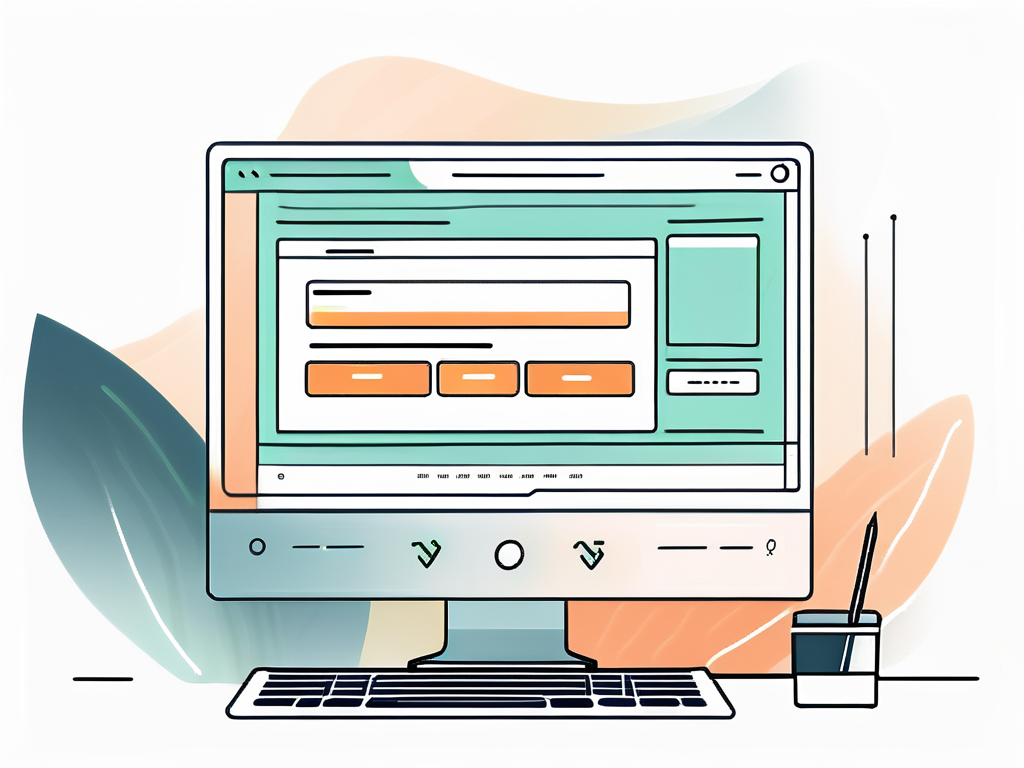Understanding the Importance of Customer Feedback
By listening to your customers and incorporating their suggestions and concerns into your website's design and functionality, you can enhance its usability, increase customer satisfaction, and ultimately drive conversions.
Customer feedback plays a vital role in the development of any website. It provides valuable insights into what your customers want and need, helping you make informed decisions about design elements, features, and content. By actively seeking and listening to customer feedback, you demonstrate that you value their opinions and are committed to providing them with the best possible experience on your website.
Moreover, customer feedback can also serve as a source of inspiration for new ideas and innovations. By analyzing the feedback received, you may uncover trends or patterns that can spark creativity and lead to the development of unique solutions that set your website apart from the competition. Embracing customer feedback as a driving force for innovation can help you stay ahead in a rapidly evolving digital landscape.
The Role of Feedback in Website Development
When developing or redesigning a website, it's essential to gather feedback from your target audience. This feedback can inform decisions about the overall user interface, navigation structure, and visual presentation. By incorporating customer feedback early in the development process, you can ensure that your website meets their expectations and aligns with their preferences.
Furthermore, involving customers in the development process can foster a sense of ownership and loyalty. When users see that their feedback directly influences the website's design and functionality, they are more likely to feel connected to the brand and become advocates for your products or services. This collaborative approach to website development not only enhances the user experience but also strengthens customer relationships.
How Feedback Contributes to User Experience
Customer feedback is instrumental in improving user experience (UX) on your website. By identifying pain points and areas that need improvement, you can make changes that enhance usability and overall satisfaction. Feedback helps identify user frustrations, uncover opportunities for optimization, and ultimately create a more seamless and enjoyable browsing experience for your customers.
Moreover, by implementing feedback-driven improvements, you can demonstrate your responsiveness to customer needs and your commitment to continuous enhancement. This proactive approach to refining the user experience can lead to increased engagement, higher conversion rates, and ultimately, greater success for your online presence. Prioritizing customer feedback as a cornerstone of your UX strategy can pave the way for long-term growth and customer satisfaction.
Gathering Customer Feedback Effectively
Gathering customer feedback is a multi-faceted process that requires careful planning and execution. Here are some tools and techniques you can use to collect feedback:

Understanding the pulse of your customers is crucial for the growth and success of any business. By effectively gathering and analyzing customer feedback, you can uncover valuable insights that can drive improvements and innovation within your organization. In addition to the tools and techniques mentioned below, it's essential to create a customer-centric culture that values and prioritizes feedback at every touchpoint.
Tools and Techniques for Collecting Feedback
Surveys and questionnaires: Create surveys to gather specific information about your website's strengths and weaknesses. Use online survey platforms or plugins to streamline the process.
User testing: Conduct usability tests to observe how users interact with your website and gather valuable feedback on areas that need improvement.
Website analytics: Analyze user behavior on your website, such as click-through rates, bounce rates, and time on page, to gain insights into user preferences and pain points.
Each of these methods offers a unique perspective on the customer experience, allowing you to paint a comprehensive picture of your audience's needs and preferences. By combining quantitative data from surveys with qualitative insights from user testing, you can develop a holistic understanding of how to enhance your products or services.
Encouraging Customers to Provide Feedback
Incentivize feedback by offering rewards such as discounts, exclusive content, or entries into giveaways. Make it easy for customers to provide feedback by placing feedback forms prominently on your website. Additionally, actively encourage users to share their opinions through social media, email newsletters, or personalized follow-up emails.
Creating a seamless feedback loop is essential for fostering long-term relationships with your customers. By demonstrating that their opinions are valued and acted upon, you can build trust and loyalty that will set your business apart from the competition. Remember, feedback is not just a one-time activity but an ongoing dialogue that should be nurtured and prioritized throughout the customer journey.
Analyzing and Interpreting Customer Feedback
Analyzing and interpreting customer feedback is crucial to extract meaningful insights that can guide your website's improvement efforts. Understanding the sentiments and preferences of your customers can significantly impact the success of your business. By delving deep into the feedback provided by your users, you can uncover valuable information that can shape your strategic decisions and enhance the overall user experience.
One key aspect of analyzing customer feedback is to not only focus on the words used but also on the emotions and underlying reasons behind those words. By employing sentiment analysis tools and techniques, you can gauge the emotional tone of the feedback, whether it's positive, negative, or neutral. This deeper level of analysis can provide nuanced insights into how customers feel about your website and its offerings, allowing you to tailor your improvements more effectively.
Identifying Common Themes in Feedback
Group feedback into categories based on common topics or issues. Look for recurring themes or patterns to gain a holistic understanding of what customers are saying. This categorization helps prioritize areas of improvement and informs decision-making processes. By identifying these common themes, you can not only address individual concerns but also uncover broader trends that may indicate systemic issues that need to be resolved to enhance overall customer satisfaction.
Prioritizing Feedback for Website Enhancements
Consider the impact and feasibility of implementing changes based on customer feedback. Prioritize enhancements that address significant pain points or have the potential to provide substantial user benefits. Balancing feedback priorities with your website development roadmap ensures continuous improvement while managing limited resources effectively. It's essential to strike a balance between addressing immediate concerns and laying the groundwork for long-term enhancements that align with your business goals and customer expectations.
Implementing Changes Based on Feedback
Once you have analyzed and prioritized customer feedback, it's time to implement the necessary changes to enhance your website. Here are some strategies for incorporating feedback into the design:

Customer feedback is a valuable asset that can provide insights into areas of improvement for your website. By listening to your users' suggestions and concerns, you can gain a better understanding of their needs and expectations. This information can then be used to make informed decisions about the changes needed to optimize user experience and overall satisfaction.
Strategies for Incorporating Feedback into Design
Iterative design: Make incremental changes based on feedback, implementing improvements one step at a time. This approach allows you to evaluate the impact of each change before moving forward.
User-centered design: Use customer feedback as a guide to create a website that meets the specific needs and preferences of your target audience.
Furthermore, involving users in the design process through usability testing and focus groups can provide real-time feedback on proposed changes. This direct interaction with your target audience can uncover valuable insights that may not have been apparent through surveys or feedback forms alone.
Measuring the Impact of Changes
After implementing changes based on customer feedback, it's essential to measure their impact. Monitor key metrics such as user engagement, conversion rates, and customer satisfaction to assess the effectiveness of the changes. This data will help you gauge whether the implemented enhancements have achieved the desired outcomes.
Additionally, conducting A/B testing can help determine which design changes are most effective in achieving your goals. By comparing different versions of your website with small variations, you can gather data on user behavior and preferences to inform future design decisions. Remember, the key to successful implementation of feedback-driven changes lies in continuous monitoring, analysis, and adaptation based on real user data.
Maintaining a Continuous Feedback Loop
Customer feedback should be an ongoing and integral part of your website development process. By actively seeking and listening to feedback, you can maintain a continuous feedback loop that leads to continuous improvement and customer satisfaction.

The Benefits of Ongoing Feedback
Continuously gathering feedback allows you to stay updated on customer preferences and adapt your website accordingly. It fosters a sense of partnership between you and your customers, making them feel valued and heard. Moreover, ongoing feedback enables you to identify emerging trends, adapt to changing user behaviors, and stay ahead of the competition.
Tips for Sustaining Customer Engagement
To sustain customer engagement and encourage ongoing feedback, consider the following tips:
Regularly communicate with your customers through newsletters, blog updates, or social media posts to keep them informed about website improvements and encourage their input.
Recognize and reward customers who provide valuable feedback, as this incentivizes further engagement.
Actively respond to customer feedback, acknowledging their contributions and addressing any concerns or issues raised. This demonstrates your commitment to customer satisfaction and encourages continued engagement.
In conclusion, customer feedback is a powerful tool for enhancing your website. By understanding the importance of customer feedback, effectively gathering and analyzing it, implementing relevant changes, and maintaining a continuous feedback loop, you can create a website that exceeds customer expectations, drives conversions, and fosters long-term customer loyalty.
Ready to take your website to the next level with the right agency or service provider? At Refetrust, we're dedicated to connecting you with top-tier partners who can transform your online presence. Leverage our extensive database of vetted agencies, compare service providers with ease, and read through verified reviews to make an informed decision. With Refetrust, you can save valuable time, accelerate your growth, and ensure that every piece of customer feedback is turned into actionable insights. Don't just enhance your website—revolutionize it. Find Agencies today and partner with the best in the business!





